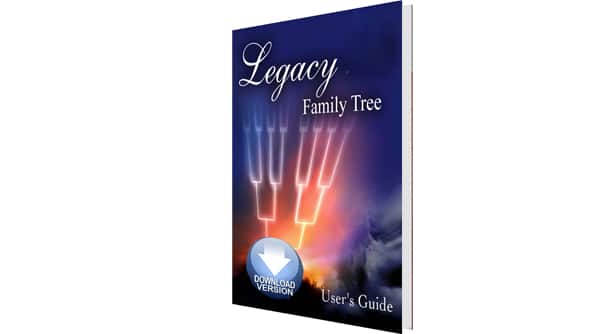Genealogy brickwalls may often feel as if they are impenetrable, but instead of using brute force to take it down, why not analyze the weak points so you can chip away at it. What do I mean by this? Creating an effective research plan increases the likelihood you will be able to solve that long-standing brickwall in your family tree. In the case of genealogy, a research plan is much more than a to-do list. I never go without some process of planning when working on a branch of my own tree or a particular project for someone else. In my experience, these have proven to be the best four steps in making an effective research plan.
Step 1 – Analyze What You Know
Genealogists embody the rule of working from the known to the unknown. You can go about this in several ways. Create a genealogical summary or report of the families you are working on, including citations for known facts. This can come in many forms; family tree programs can export the data into a report or you could write about the research problem in a private journal or online blog. A timeline of your ancestor’s life events may also be helpful in analyzing the gaps. Whatever you decide that works best for you, the point is that taking stock of what you know will lead to much more focused research questions and objectives. At the top of your research plan, state the questions and objectives you are interested in pursuing.
Step 2 – Organize by Location
Hammering out the specifics of a research plan is the most important part. Studying the administrative divisions of a particular country will give us important information on where genealogical records are found. For example, in United States Genealogy you want to check for records and resources at the following levels:
- Federal/National Level
- State
- County
- Town
When looking at a brickwall ancestor, it’s important to construct the research plan around every place they’ve been documented as living. Take the example of revolutionary war veteran Isaac Sweet. Isaac Sweet, born 1755 in East Greenwich, Kent County, Rhode Island; died 1834 in Schuyler, Herkimer County, New York. Isaac and his wife Sarah Vaughan had several children, but there is no direct evidence of kinship from original records, even though the relationship made it into published genealogies. While one might think that exhausting records related to Isaac’s place of birth and death would be enough, rarely did our ancestors travel directly from point A to point B. Returning to step one and analyze previously gathered documents was crucial for the case of Isaac Sweet. In Isaac’s declaration for a Revolutionary War pension, he testifies to having resided in three additional towns including:[1]
- Coventry, Kent County, Rhode Island (borders East Greenwich)
- Petersburg, Rensselear County, New York
- Salisbury, Herkimer County, New York
With this new evidence, my research plan was expanded to include records related to these locales. My suggestion is when you are making the plan, that within each objective you section it off by the county of interest, then bullet points for the specific source or series of records you desire to look at.
Step 3 – Investigate Resources
Studying the ins and outs of genealogical research in the locations related to our brick wall is essential. This step is ongoing because it falls under the process of continuing education. As genealogists, we want to learn from authorities on the subjects and locations that pertain to our research. This can be accomplished by reading the FamilySearch Wiki, attending conferences, webinars, joining local genealogical societies, searching the catalogs of libraries and archives, and following genealogy blogs. A small but growing number of locality guides are on the ProGen Study Group Website and if pertaining to your research, could be an invaluable resource. We live in a genealogy world with many possibilities for educating ourselves and should be grateful for the experts who are giving their time to bring us closer to solving our family mysteries. Not only that, but staying current with changes in the field of genealogy is also necessary. Many blogs, like Genea-Musings and Ancestor Hunt, report on records that are newly available online. Taking in all these educational opportunities can provide genealogists with extremely thorough research plans.
Step 4- Incorporate the FAN Principle
The FAN principle encourages researchers to look at the individuals and families that were part of our ancestor’s inner circle. An in-depth study of using the FAN principle is beyond the scope of this blog post, but in regards to research plans, incorporating our ancestor’s FAN club into the plan is essential. Using our documentation from Step 1, we can identify the FANs and add steps to our research plan that would ensure we search for clues in their records. In the example above of Isaac Sweet, tracing the lives of his children and their spouses would be an important undertaking in hopes that original genealogical sources show their kinship to Isaac Sweet. On the flipside, examining Isaac Sweet’s siblings in might unearth documents that identify Isaac Sweet’s children as nieces or nephews. I would classify the pursuing of FANs as a separate objective.
In all, the requirements for a good research plan are flexible, but best achieved by thinking broadly and crafted with the objective of making sure our research exhausts all possible options. A good plan will allow researchers to approach their genealogy with focus and methodical precision. Are there other steps genealogists take to create their research plans? What tools or apps do you use to manage your research plans?
Learn more about Research Plans for these webinars in the Legacy Family Tree Webinars Library:
[1] Declaration of pension by Isaac Sweet, dated 11 Sep 1832, pension number W. 20,078; “Revolutionary War Pension Files,” database and images, Fold3.com (www.fold3.com: accessed 30 Aug 2016).
—
Jake Fletcher is a professional genealogist, educator and blogger. Jake has been researching and writing about his ancestors since 2008 on his research blog. He currently volunteers as a research assistant at the National Archives in Waltham, Massachusetts and is Vice President of the New England Association of Professional Genealogists (NEAPG).





Comments (0)